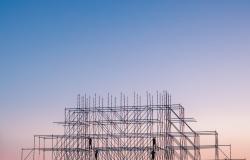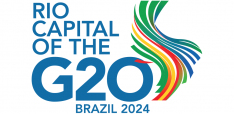China builds influence using African parliaments

The People’s Republic of China has fully financed the construction of at least 15 new African parliamentary buildings and refurbished and furnished several others on the continent. Innocent Batsani-Ncube examines China’s delivery of one such building, in Lesotho.
In 2005, during Prime Minister Pakalitha Mosisili’s visit to Beijing, China offered to pay for the construction of a new Lesotho parliament building.
The Lesotho government had identified a purpose-built parliament building as a priority the year before, one which would be a major enabler of the country’s parliamentary reform programme. The old building, constructed in 1909 and refurbished in 1959, was no longer fit for purpose because it could not accommodate the expanding functions of parliament. The new building was officially opened in 2012 at a cost of £7 million. China has also recently completed the construction of parliament buildings in The Republic of Congo, Malawi, Seychelles and Zimbabwe.
In 2005, at the time of Mosisili’s visit to China, he was the incoming chairperson of the Southern African Development Community (SADC). In this role, he would later play an important part in the Forum on China–Africa Cooperation Summit in Beijing. On behalf of SADC, he addressed the opening ceremony of the High-level Dialogue and the Second Conference of Chinese and African Entrepreneurs. The parliament building donation was certainly made at a time of strategic importance for Lesotho.
While the donation fulfilled an existing need in Lesotho, the mode of project execution indicates China’s intentions to leverage the gift for long-term political influence in the parliamentary institution. Its method of donating parliament buildings – controlling their design, construction and long-term maintenance – seems designed to embed its influence in parliamentary institutions to have recurrent access to dominant cross-party elites.
The parliament building is Lesotho’s most visible political institution. It houses the office of the King, the Senate and the National Assembly. The executive is drawn from parliament and its leader, the Prime Minister, must command a majority in the National Assembly. In essence, parliament is the soul of the Lesotho political system.
A parliament with Chinese characteristics
In executing the parliament building project, China deliberately side-lined earlier plans developed by the Lesotho government’s multi-stakeholder steering committee. The steering committee drew members from the Lesotho National Assembly, Senate, Ministry of Public Works Building Design Services (BDS), Maseru City Council and Ministry of Finance and had produced a design template for the building in 2004.
Instead, China nominated the China Northeast Architectural Design and Research Institute to produce a separate design and appointed the Chinese Yanjian Group construction firm to construct the building. The firm employed Chinese artisans – such as carpenters, bricklayers, plumbers and electricians – in key roles. Local artisans were employed as labourers at worst and trainees at best.
The net effect of China’s dominance in the design and implementation of the building project was that the final product reflected more the desires of the giver and less the wishes of the recipient. The contractor was supervised by a Chinese technical design team instead of the BDS. The role of the BDS was limited to monitoring the technical design team that was supervising the contractors. The Chinese construction firm applied Chinese construction standards and materials specifications.
Chinese contractors have been maintaining the building since it was completed. They have established a semi-permanent work compound at the foot of Mpilo Hill where the Parliament building is located. The compound precast wall is emblazoned with the words Chinese Technical Team, taking care of the new Lesotho Parliament building and a visible China aid logo at its gate. Lesotho government officials have conceded that they do not have the technical people to take care of the building and need to continuously extend the contract for the Chinese technical teams so that they assist in taking care of the building.
The vice-like grip on the building’s maintenance appears deliberate and meant to guarantee China’s long-term presence in Lesotho. In constructing the building in this manner that only they could maintain, China sought to make itself indispensable to the management and maintenance of the Lesotho parliament building.
China’s direct engagement in Lesotho’s parliament building has partly enabled it to maintain and consolidate relations with successive governments. When China offered to build the parliament of Lesotho, the Lesotho Congress of Democrats (LCD) and Pakalitha Mosisili were the governing party and Prime Minister respectively. At the time, Thomas Thabane’s All Basotho Congress (ABC) was the official opposition. However, by the time the building was completed the roles had changed, the ABC was now the governing party with Thabane as the Prime Minister. They have also dealt with two more – the Moeketsi Majoro and Sam Matekane administrations.
China’s method of constructing the Lesotho parliament building was a self-interested venture. Its maintenance of the parliament building has made it indispensable and granted it continued access to Lesotho’s political system to help secure China’s long-term foreign policy interests.
While political elites have come and gone, there have been two constants: China and Lesotho’s parliament building.
Innocent (Ib) Ncube is an Usawa Postdoctoral Research Fellow at SOAS, University of London. He specialises in the politics and political economy of China’s (state and business actors) relations with and African, Caribbean and Pacific States. Ib’s research spotlights how these intra-global South relations are transforming domestic political institutions and the extent to which they impact internal and international balance of power. His work has appeared leading peer reviewed journals that include in Africa Review, Curator: The Museum Journal, Journal of Contemporary African Studies, Journal of Southern African Studies and Parliamentary Affairs.
This first appeared on Africa@LSE.
Image: Photo by Igor Starkov


